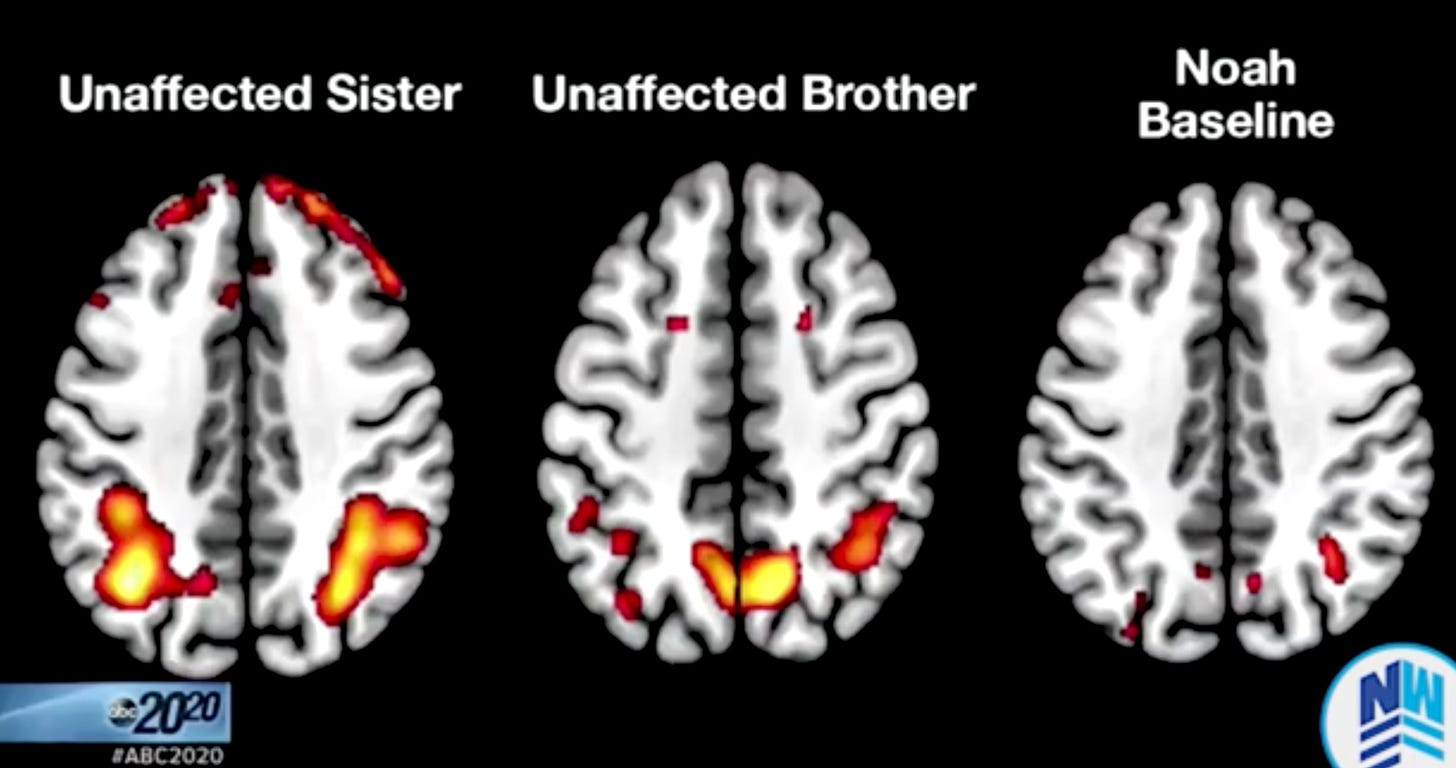All articles are free. However, your support as a paid subscriber enables me to continue producing high-quality, independent journalism on this important topic.
As an ad-free platform, I rely on the support of my readers to keep this content accessible and free from external influence.

Silicon Valley children are low-tech
Did you know that Steve Jobs and Bill Gates didn’t give their own children wireless devices?
Silicon Valley executives and engineers enroll their kids in no-tech Waldorf Schools.
Google founders Sergey Brin and Larry Page went to no-tech Montessori Schools, along with Jeff Bezos and Wikipedia founder Jimmy Wales.
These individuals know that education is so much more than just being stimulated by a tablet in an “immersive” (code for addictive) experience.
A true immersive experience is creating with your hands:
From Harvard’s School of Public Health (link):
Michael Rich, associate professor in the Department of Society, Human Development, and Health at Harvard School of Public Health—raised doubts about the wisdom of allowing very young children to use iPads.
Rich questioned the iPad’s benefits as a teaching tool and suggested that, like television, it could lower children’s attention spans.
Although children enjoy iPad apps such as finger painting, Rich countered that:
“the iPad does not give you that great feeling of paint squishing through your fingers. As much of a pain as that is for parents, think how much kids are learning about cause and effect.
When children draw or paint pictures, they can make their hair all green and get a real reaction from Mom.”
The way we use our hands can develop or impair our brains, as we carry a vast array of nerve endings in our fingers, which then shape the learning and processing centers of our brains.
Recent research published in the journal Nature Neuroscience1 suggests that the nerve endings in our fingertips can perform complex neural computations that were thought to be carried out by the brain.
I find that when I use my hands on a task that doesn’t demand much cognitively, it gives my mind a chance to relax and rest. This is why love gardening and getting my hands in dirt, it gives me a feeling of connection to the Earth that’s both primal and calming at the same time.
Get ‘em while they’re young.
Do you remember how cigarette ads were shown to target children? Industries such as Big Tobacco & Big Tech focus on children to boost their market share. According to a 2013 report in Bloomberg, tech companies know where you to find new customers: “if you’re looking for young people, there’s no better place to find them than in schools.”
Common Core, The Bill & Melinda Gates Foundation-backed initiative was an educational flop. Nonetheless, Common Core was a boon for the tech industry, inspiring a “gold rush” to supply the iPads and laptops on which the digital curriculum was meant to be delivered.
The devices were also central to Common Core’s push for “individually adaptive computerized assessment” and the collection and cloud storage of troves of “Big Brother” data on schoolchildren.
If you’d like to learn more about how Big Tech is using the same manipulative tactics as Big Tobacco, I would suggest you read the following article:
Digital Heroin
The addiction pathways that are reinforced have even deeper implications.
Dr. Peter Whybrow, director of neuroscience at UCLA, calls screens “electronic cocaine.”
Chinese researchers call them “digital heroin.”
Dr. Andrew Doan, the head of addiction research for the Pentagon and the US Navy — who has been researching video game addiction — calls video games and screen technologies “digital pharmakeia” (Greek for drug).
Ever since Dr. Whybrow took over UCLA’s Institute for Neuroscience and Behavior in 1998, during the days of the dotcom bubble, he saw our human behavior was rapidly changing, and reminded him of the symptoms he saw related to clinical mania: excitement over acquiring new things, high productivity, fast speech—followed by sleep loss, irritability, and depression.
“Many of the usual constraints that prevented people from doing things 24 hours a day—like distance and darkness—were falling away.”
- Peter Whybrow
Whybrow researched why we can’t just stop this continual stimulation from the perspective of brain science.
The most primitive part of our brain - the medulla and cerebellum- developed thousands of years ago when our survival wasn’t always certain, and this brain region contains the roots of our ancient dopamine reward pathways.
When these reward circuits are overloaded with near-continuous spikes in dopamine, our craving for reward—be it drugs, sex, food, or incoming texts—“becomes a hunger that has no bounds,” says Whybrow.
Dopamine is spiked by blue light, which you can read about here:
From Manic Nation: Dr. Peter Whybrow Says We’re Addicted to Stress:
“With most natural constraints gone, all we’ve got left is our own intelligence and the internal regulatory system in the frontal cortex, the most recent evolutionary addition to the brain. This “executive brain” regulates impulse control and reasoning. But, Whybrow notes, “despite our superior intelligence, we remain driven by our ancient desires.
While our brains’ reward centers are in overdrive, so are their threat-warning systems. The brain’s hard-wired fight-or-flight response, buoyed by a rush of adrenaline, evolved as a response to acute emergencies, like fending off a charging lion.
Since the primitive “reptilian” brain can’t distinguish between a real or potential threat, it responds to any psychosocial challenge, be it rush-hour traffic, overdue mortgage payments, or repeated deadlines, by triggering some measure of the fight/flight response.
“I’ve made a conscious decision to live a life that is not driven by someone else’s priority. No matter how good that dopamine feels.”
-Peter Whybrow
According to the American Academy of Pediatrics, 8 to 10 year-olds spend 8 hours a day with various digital media while teenagers spend 11 hours in front of screens.
One in three kids are using tablets or smartphones before they can talk!
According to Dr. Nicholas Kardaras, once a person crosses over the line into full-blown addiction — drug, digital or otherwise — they need to detox before any other kind of therapy can have any chance of being effective. This is a full digital detox — no computers, no smartphones, no tablets.
How Screens Damage our Brains
The effects of screen addiction are not always as obvious as someone who’s had too much to drink and can’t walk straight. However a lack of zest, of connection often occurs as higher-level functioning and more evolved brain regions such as the neocortex are harmed.
Multiple studies have shown atrophy (shrinkage or loss of tissue volume) in gray matter areas (where “processing” occurs) in internet / gaming addiction (Zhou 2011, Yuan 2011, Weng 2013,and Weng 2012).
Areas affected included the important frontal lobe, which governs executive functions, such as planning, prioritizing, organizing, and impulse control.
A finding of particular concern was damage to an area known is the insula, which is involved in our capacity to develop empathy and compassion for others and our ability to integrate physical signals with emotion. Aside from the obvious link to violent behavior, these skills dictate the depth and quality of personal relationships.
The brain scan above shows Noah, who plays video games vs those of his siblings. Noah has much less activity in his normal brain state compared to his brother and sister.
What about kids who aren't "addicted" per se?
From Dr. Victoria Dunckley:
“A much broader concern that begs awareness is the risk that screen time is creating subtle damage even in children with ‘regular’ exposure, considering that the average child clocks in more than seven hours a day (Rideout 2010). As a practitioner, I observe that many of the children I see suffer from sensory overload, lack of restorative sleep, and a hyperaroused nervous system.”
Moreover, there have been many studies showing how exposure to wireless can cause DNA breaks, leading to cancers and leukemia. - link
“The differences in bone density and the amount of fluid in a
child’s brain compared to an adult’s brain could allow children to absorb greater quantities of RF energy deeper into their brains than adults.”-The American Academy of Pediatrics
If your parent was a smoker, you were more likely to be a smoker. What happens when your parents, teachers, priests, and doctors in your community are all “smoking” mobile phones? What are the chances that you’ll become addicted?
Do children even have a chance when they’re in front of these devices all day in school, and all night at home?
I know that many will say that “we have to have these phones for work, for emergencies, etc.” However I would beg for us to use a little of the pre-frontal cortex we have left, and go back to the future…
When our desktop computers worked wonders.
When neighbors and police officers, along with good samaritans, came to our rescue.
Dare I say…trust a good samaritan to give us a ride back home.
There is no ultimate safety in trust, yet there is no freedom in safety.
We must choose.
We are more powerful than we know.
Roman & Bohdanna
Part 2 of this article:
We’re creating a course on Wireless Health & Safety!
What are some basic steps we can take today to provide a safer living environment for our children?
How can we help nourish our children’s nervous system?
I’ll be covering these types of specifics, along with practical steps we can take to reduce EMFs in our daily lives, in the Wireless Health & Safety course I’m creating.
Thank you so much for taking the time out of your day to read this article!
If you’ve found it valuable, please share it with someone you know who might benefit from its message.
EMF Health Forum: Please share your story
If you suspect that you or your animals are suffering from symptoms related to EMF, I strongly encourage you to register and post symptoms on EMF Health Forum, which I recently created to track the global fallout from wireless radiation:
Support and Decentralize Medicine: Donate in Bitcoin (BTC)!
BTC Address:
bc1qfwtn8f95z7urkgfgj8c9t6dt3lay0shtgazr72











Fabulous piece. Such a wealth of info. I think I saw it when it came out, because so much feels familiar, esp the opening. Now, it's come at just the right time for me. I would like to interview you for Truth Summit 2. I will email you, and also you can email me: truthsummit@substack.com
Very important info for parents, teachers and all adults who want our children to flourish. ps I agree with the part about the need to use our hands https://www.outthinkingparkinsons.com/articles/hands-fingers?rq=hands